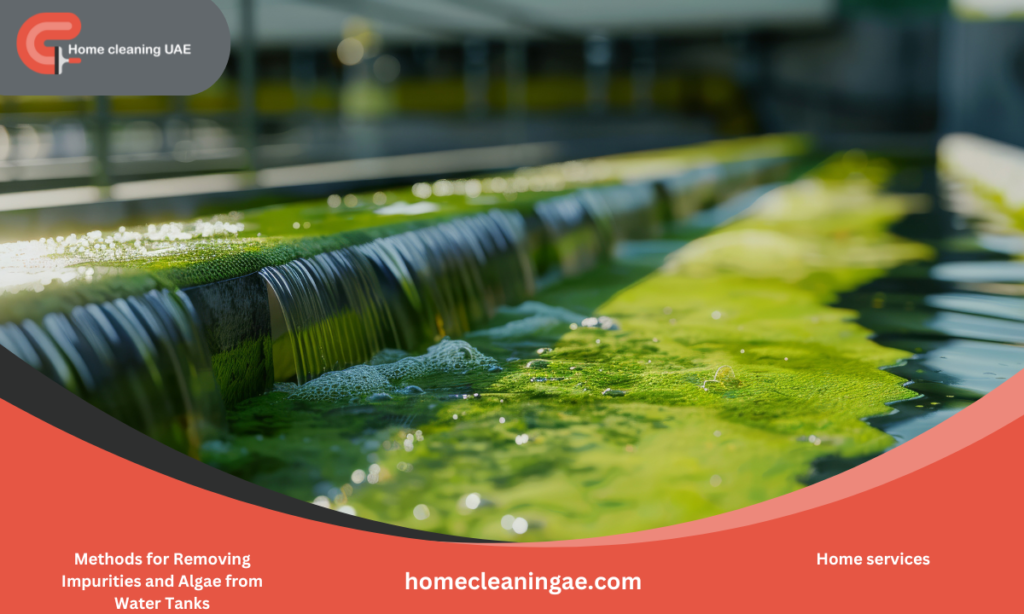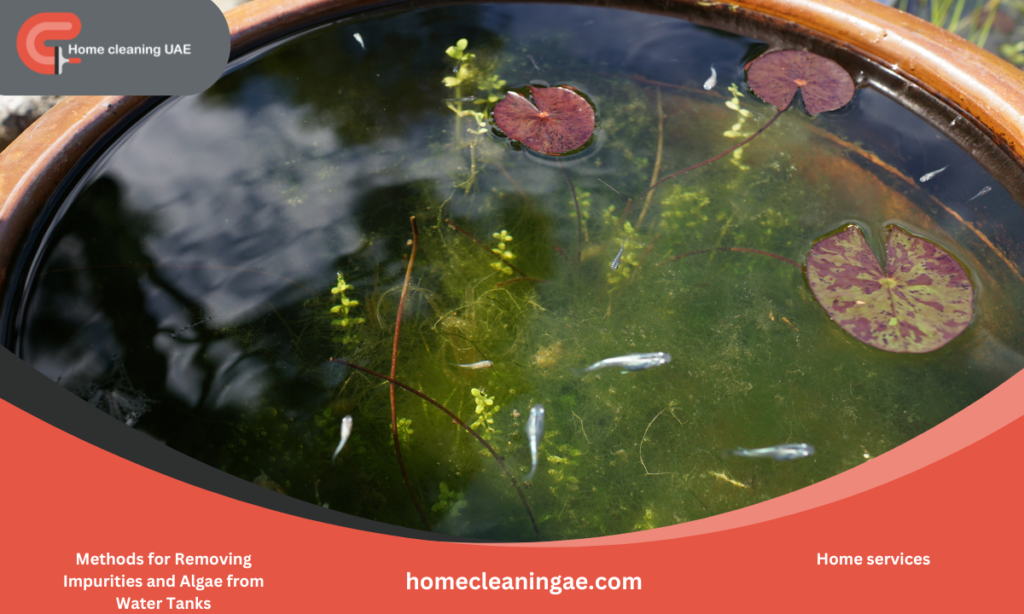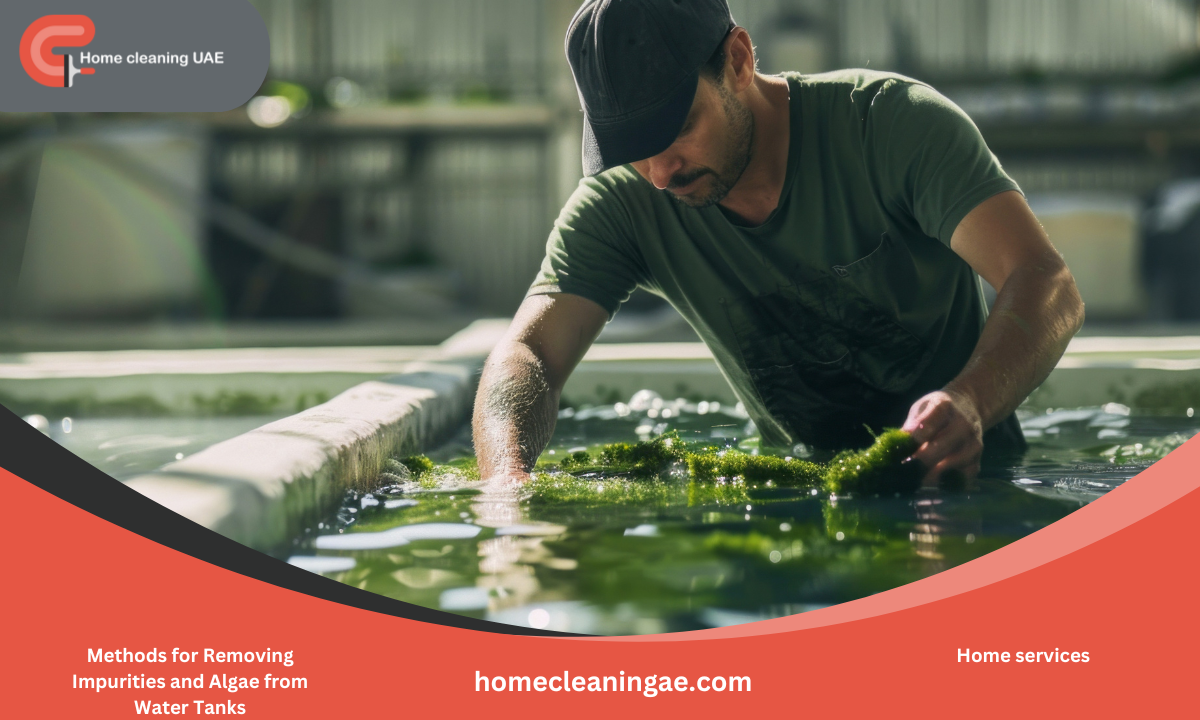Water tanks are essential components in water systems, providing a vital source of fresh water. However, these tanks may experience algae and impurity buildup, negatively impacting water quality and user health. Environmental factors like heat, light, and the presence of nutrients contribute to algae formation. Various Ways to Remove Impurities and Algae from chemical solutions and mechanical techniques to biological methods, each with its benefits and challenges. This overview highlights the main approaches, their benefits, and challenges, helping to maintain water tanks clean and suitable for use.
Methods to Remove Impurities and Algae from Water Tanks
Removing impurities and algae from a water tank requires specific steps and procedures to maintain water quality. Here are some effective methods:
- Periodically empty the tank.
- Use a coarse brush or sponge to clean the walls and ceiling.
- A diluted chlorine solution can be used to disinfect the tank; ensure to rinse the tank thoroughly afterward.
- Reduce light exposure to the tank, as light promotes algae growth.
- Use filters to purify the water before it enters the tank.
- Ensure the drainage system works efficiently to avoid sediment buildup.
- White vinegar or baking soda can be used as natural cleaning alternatives.
- Regularly test the water to ensure it is free from impurities and algae.
- For large or heavily contaminated tanks, it’s advisable to hire a specialized water tank cleaning company.
- Always monitor water quality and store it properly to ensure health safety.
The Impact of Algae and Impurities on Drinking Water
Algae and impurities in drinking water can lead to various health hazards, including:
- Algae contain toxins, such as cytotoxins, which can have serious health implications.
- Algae can affect the water’s taste and odor, making it unpalatable.
- Algae and impurities can clog pipes and distribution systems, affecting overall system efficiency.
- Some algae species consume oxygen in the water, reducing the oxygen levels necessary for aquatic life.
- The presence of algae and impurities requires additional treatment processes, increasing the cost of clean water production.
- Algae can negatively impact wildlife, especially organisms relying on freshwater sources.
Causes of Algae Growth in Water Tanks
Several factors can contribute to algae growth in water tanks, including:
- High nutrient levels like nitrogen and phosphorus, often due to fertilizer or sewage leakage.
- Adequate light, as algae require light for photosynthesis.
- Increased temperatures, especially during summer, promote algae growth.
- Stagnant water tanks are more prone to algae growth.
- Pollutants or organic materials in the tank can lead to algae blooms.
- A lack of competing organisms can lead to increased algae growth.
To control algae growth, monitoring nutrient levels, light exposure, and improving water flow where possible are recommended.

How Algae Forms in Water Tanks
Algae are microscopic organisms that can be present in water tanks, often composed of single or multiple cells. Algae growth relies on light, as they undergo photosynthesis to produce food.
- Adequate light exposure promotes algae growth.
- The presence of nitrogen and phosphorus aids in their reproduction.
- High temperatures positively influence algae growth.
- Stagnant water usually encourages algae proliferation.
- Algae serve as a food source for many aquatic organisms.
- Excessive algae growth can degrade water quality, leading to issues like oxygen depletion and foul odors.
Tips to Prevent Algae Growth in Water Tanks
- Limit light exposure to the tank, as algae thrive in bright environments. Use covers or place the tank in a shaded area.
- Avoid excess nutrients like nitrogen and phosphorus, which foster algae growth; minimize fertilizer use near the tank.
- Regularly clean the tank to remove any algae or sediment buildup.
- Use air pumps to improve water flow and aeration, reducing the likelihood of algae growth.
- Use specialized covers to cover the tank when not in use, preventing light exposure.
- Consider planting some aquatic plants that compete with algae for nutrients, helping control their growth.
- If the tank is exposed to wastewater, try using fresh and filtered water.
- Regularly monitor water and nutrient levels to ensure concentrations remain low, preventing algae proliferation.

Factors That Promote Algae Growth in Water Tanks
- Sufficient Light Availability: Adequate light enables algae to undergo photosynthesis, enhancing their growth.
- High Levels of Nutrients: Elevated levels of nutrients, such as nitrogen and phosphorus, lead to algae reproduction.
- Moderate to Warm Temperatures: These conditions are ideal for algae growth.
- Stagnant or Slow-Moving Water: Algae thrive in stable environments, which stagnant or slow-moving water provides.
- Reduced Oxygen Levels: Lower oxygen levels contribute to the spread of certain algae types.
- Presence of Decomposable Organic Matter: Organic material offers an additional food source for algae.
- Pollution from Industrial or Agricultural Sources: These pollutants can increase nutrient levels, promoting algae growth.
- Effective algae management in water tanks can help control their growth.
Solutions to Prevent Algae Accumulation in Water Tanks
Algae buildup in water tanks can cause health and environmental issues. Here are some solutions to prevent algae accumulation:
- Reduce Light Exposure: Algae need light to grow. Limiting light exposure by covering the tank or using shaded covers can reduce algae growth.
- Keep Water Clean and Free of Excess Nutrients: Ensuring the water is clean and has low levels of nutrients, like nitrogen and phosphorus, helps reduce algae growth.
- Install Suitable Filters: These filters can aid in removing algae and bacteria from the water.
- Maintain Cooler Water Temperatures: Algae thrive in warm temperatures, so try to keep the water cool, especially during summer.
- Use Biocides with Caution: Certain chemicals, like biocides, can help reduce algae growth. Use them carefully, following instructions.
- Regularly Clean the Tank: Regular cleaning removes algae and sediment buildup.
- Introduce Algae-Eating Fish: Certain fish, like carp, consume algae and help limit their growth.
- Regularly Replace a Portion of the Water: This helps in reducing algae buildup.
- Prevent Tank Leakage: Ensuring no water leakage from the tank to the surrounding environment avoids algae growth in nearby areas.



